Briefing on the Arctic sea ice minimum and Antarctic sea ice maximum – September 2025
Alex West
Summary
- Arctic sea ice has reached its seasonal minimum, at 5.15 million sq km, the joint 15th lowest on record according to the OSI SAF Sea Ice Index
- Antarctic sea ice extent is still rising; if not subsequently exceeded, the maximum extent to date would be the 3rd lowest on record (18.28 million sq km)
Arctic sea ice minimum
On 6th September, Arctic sea ice reached its likely minimum extent for the year (Figure 1), at 5.15 million sq km according to the OSI SAF Sea Ice Index (Lavergne et al., 2023). This is the joint 15th lowest minimum extent in the era of satellite observations (since 1979) and is 1.43 million sq km below the 1981-2010 average (Figure 2).
Notably, this is a slightly different ranking to that of the Sea Ice Index maintained by the [US] National Snow and Ice Data Center, for which the 2025 minimum is joint 10th lowest. Uncertainty in ranking the current year is likely higher than normal due to a change in the satellite sensor used which occurred on 1st August 2025; variation between sensors is handled differently across the two datasets. Regardless, the two datasets agree that the 2025 minimum is well below the 1981-2010 average, and close to the post-2007 average.
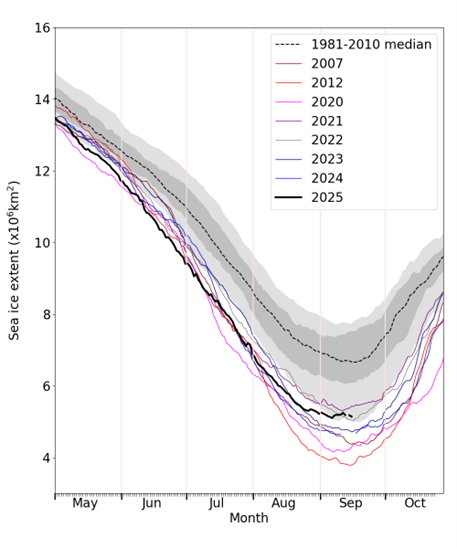
Figure 1. Daily Arctic sea ice extent for 2025, compared with recent years and the 1981-2010 average, with interquartile and interdecile ranges indicated by the shaded areas. Data are from the OSI SAF Sea Ice Index (Lavergne et al., 2023).
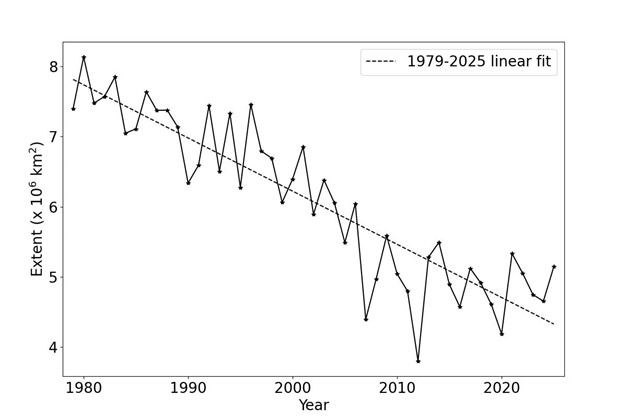
Figure 2. Arctic sea ice minima from 1979 to 2025 according to the OSI SAF Sea Ice Index (Lavergne et al., 2023). The minimum sea ice extent is taken to be the lowest 5-day average.
Extent at minimum was well below average in all regions of the Arctic, except in parts of the East Siberian Sea and in the eastern Beaufort Sea (Figure 3).
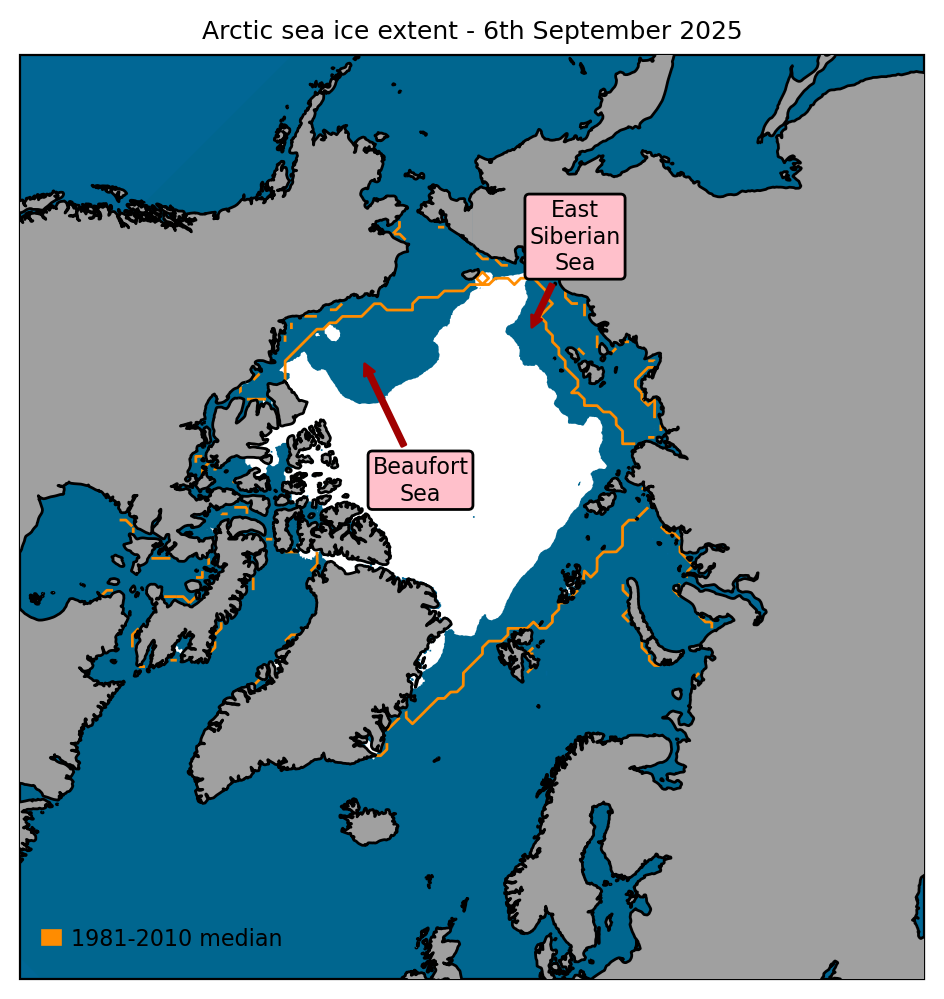
Figure 3. Annual minimum Arctic sea ice extent (6th September 2025), with 1981-2010 average extent for this date indicated in orange. Data are from EUMETSAT OSI SAF (Tonboe et al., 2017).
Antarctic sea ice maximum
The maximum Antarctic sea ice extent of the year is usually recorded in September or early October. As of 18th September, the maximum Antarctic sea ice extent to date was 18.28 million sq km, recorded on 15th September. This is already higher than the maxima of 2023 and 2024 (17.56 and 17.69 million sq km respectively) but, if not subsequently exceeded, is otherwise lower than any other maximum in the satellite record. However, it is still possible that Antarctic sea ice could rise to a higher extent again before the onset of melt.
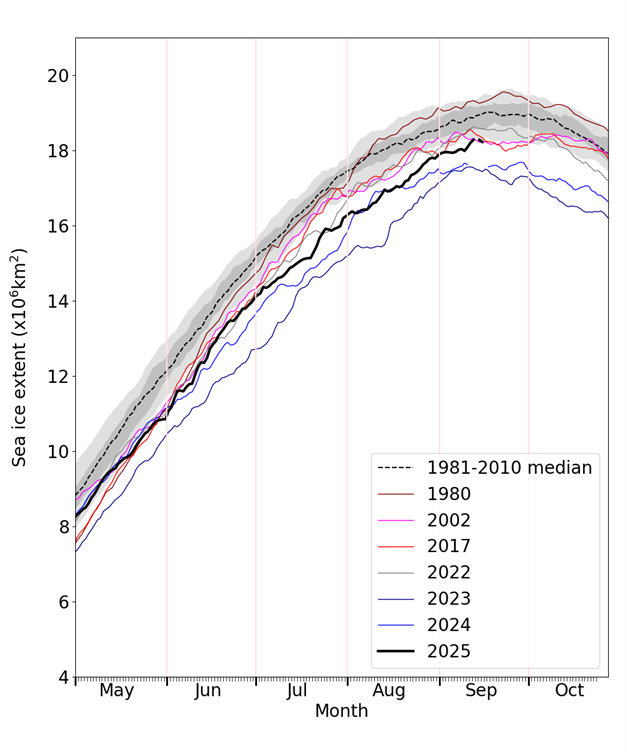
Figure 4. Daily Antarctic sea ice extent for 2025, compared with recent years, some historic low-ice years, and the 1981-2010 average, with +/- 1 and 2 standard deviation intervals indicated by the shaded areas. Data are from the OSI SAF Sea Ice Index (Lavergne et al., 2023).
Extent was well below average in the Bellingshausen Sea west of the Antarctic Peninsula, and in parts of the Indian Ocean sector, but was near- or above average elsewhere (Figure 5).
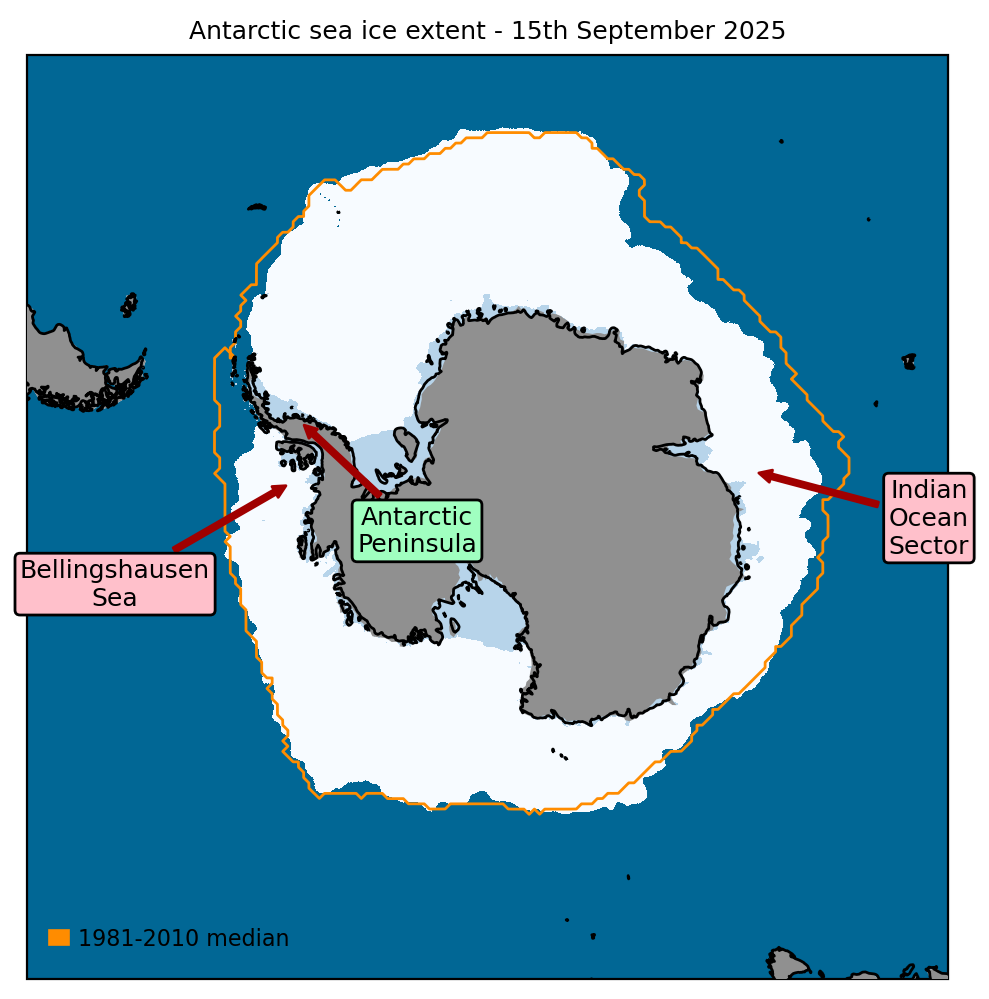
Figure 5. Antarctic sea ice extent (15th September 2025), with 1981-2010 average extent for this date indicated in orange. Data are from EUMETSAT OSI SAF (Tonboe et al., 2017).
References
Lavergne, T. et al. (2023) OSI SAF Sea ice index 1978-onwards, Product OSI-420, Version 2.2, May 2023, Available at: https://thredds.met.no/thredds/osisaf/osisaf_seaiceindex.html. Date Accessed: 19-09-2025
Tonboe, R., J. Lavelle, R.-H. Pfeiffer and E. Howe (2017) OSI SAF Global Sea Ice Concentration, Product OSI-401-b, Version 1.6, September 2017. Available at: https://osi-saf.eumetsat.int/products/osi-401-b. Date Accessed: 19-09-2025


